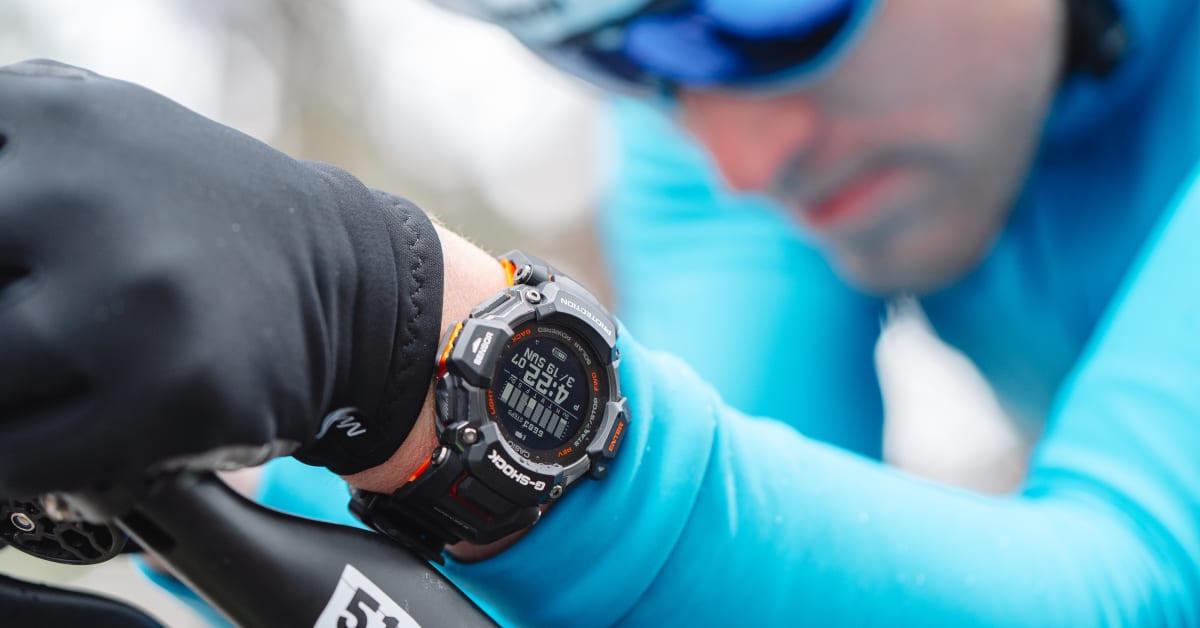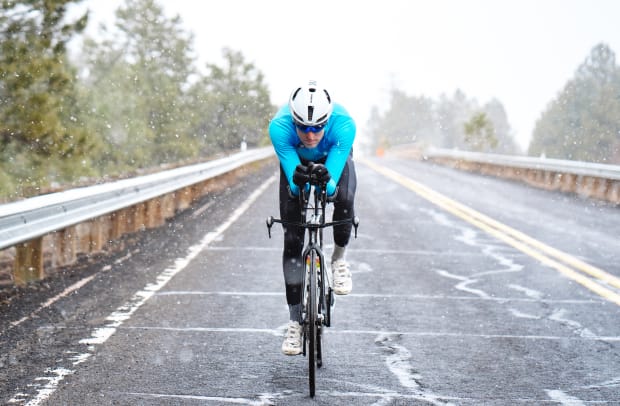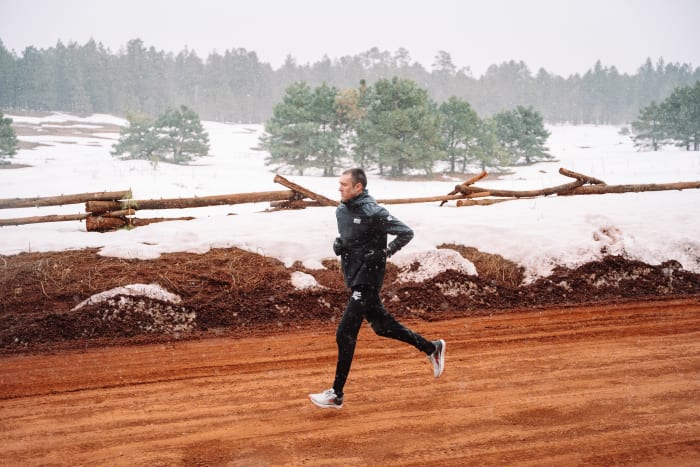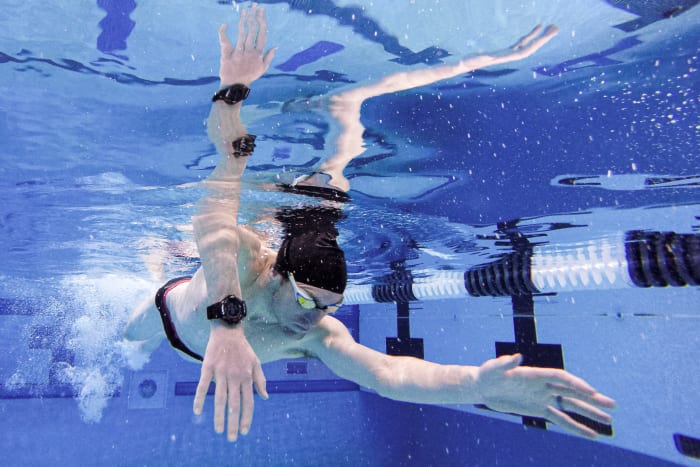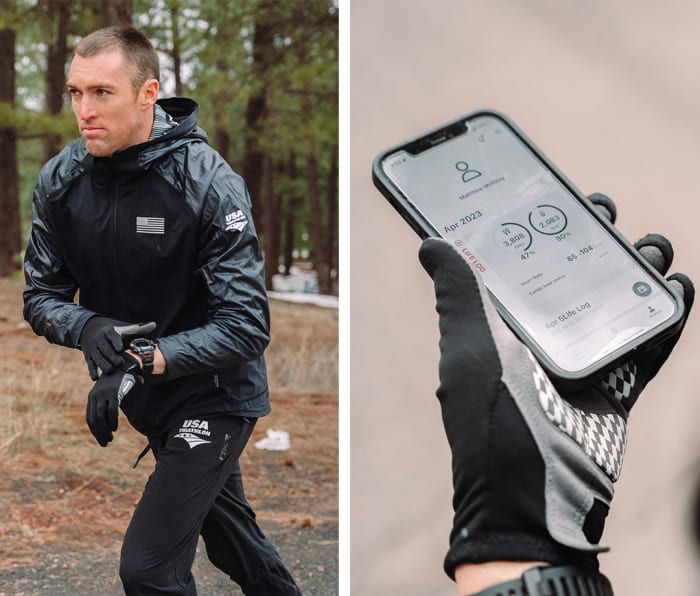For nine-time World Triathlon Cup medalist Matt Mcelroy, “data is absolutely the most important thing to collect in terms of training.”
The 30-year-old professional triathlete is a three-time All-American, who ran for Northern Arizona University and was recruited to go pro through the USA Triathlon Collegiate Recruitment Program.
He won his first World Cup gold at the 2019 World Triathlon Cup Tongyeong in South Korea, and holds the distinction of being one of only three U.S. men to medal in a World Triathlon Championship Series race, with a silver in Leeds in 2019.
Mcelroy averages six strenuous workouts a week, not to mention his usual daily activities and bonus sessions. Throughout each, he gathers pace, heart rate, interval, split, and stroke count, to name a few.
“In order to work on weaknesses and see improvements—the fundamentals of my training—I have to be able to trust my gear,” he says.
Strapped to Mcelroy’s wrist is GBDH2000, the latest addition to the G-SHOCK MOVE series of watches. After every session, he shares his splits and heart rate with his coach.
“It has to be spot on because a lot of the time I’m training solo,” he says.
Mcelroy lives in Flagstaff, AZ, while his coach resides 690 miles north in Boulder, CO. From analyzing the data, the two discuss workout modifications and possible improvements.
Multi-sport Specs
The first GBDH timepiece, GBDH1000, debuted in April 2020. It’s successor, GBDH2000, has updated design and technology features, including multi-sport functionality with an additional sixth sensor. It’s able to track different elements, supporting athletes across a wide range of activities from running to swimming to HIIT workouts, as well as classic measurements like a step counter.
“Having a watch that allows me to collect different data while I’m swimming, biking and running is meaningful. It goes from being a good to a great tool,” says Mcelroy.
“For example, the run activity has pace on it, meaning I can gauge my pace out on the roads. I finish an interval and hit the split button and I get an overall pace as well as heart rate for each. My foundation in racing is pace, and with this I can get super specific in terms of intervals.”
GBDH2000’s optical sensor on the caseback measures heart rate while the internal gyroscope measures body movement, like flip turns in a pool. “I was swimming the other day and it was such a relief to know GBDH2000 was measuring my strokes. Instead of counting in my head, I was able to turn off every little aspect of the workout in my brain and just focus on breathing.”
There’s also a compass, accelerometer, altitude/air pressure sensor, and thermo sensor that measures temperature. Weighing in at 63 grams, GBDH2000 is 38 percent lighter than its predecessor. It also has built-in GPS functionality to measure position, distance, and speed, all of which track a variety of movements in real time during physical activity.
“The data needs to be precise or I may not use the equipment again,” Mcelroy adds matter-of-factly.
When biking, he’s able to record distance, speed, time, altitude, heart rate, calories burned, and road gradient. “There’s a lot of different elements and features—being able to maximize them is really important long term.”
Mcelroy trains roughly 30 hours per week.
“I’ve done 20 workouts in this watch and I haven’t charged it once,” he says, adding, “that’s impressive and a huge bonus when you’re working out three times a day. I can’t even tell you the amount of times I’ve shown up to a workout and I’ve had a different watch on and it’s low battery or won’t make it through. That isn’t an issue here, especially with the solar-assisted charging. That’s a relief for an endurance athlete like me.”
Although Mcelroy is laser focused on gathering data from his training sessions, he opted to keep the watch on even when the workouts stopped.
“There’s just so much loaded into the watch,” he says. “How I walk around throughout the day gives me insight, just like the workout data. I’ve got a newborn baby. At four months old, my wife and I are walking around town and running around the house. The other day I was wondering why my legs were more tired than normal and I looked at the step counter. I was doing too much walking outside of training. On a recovery day my step count was insane. It’s a simple measurement but definitely effective.”
